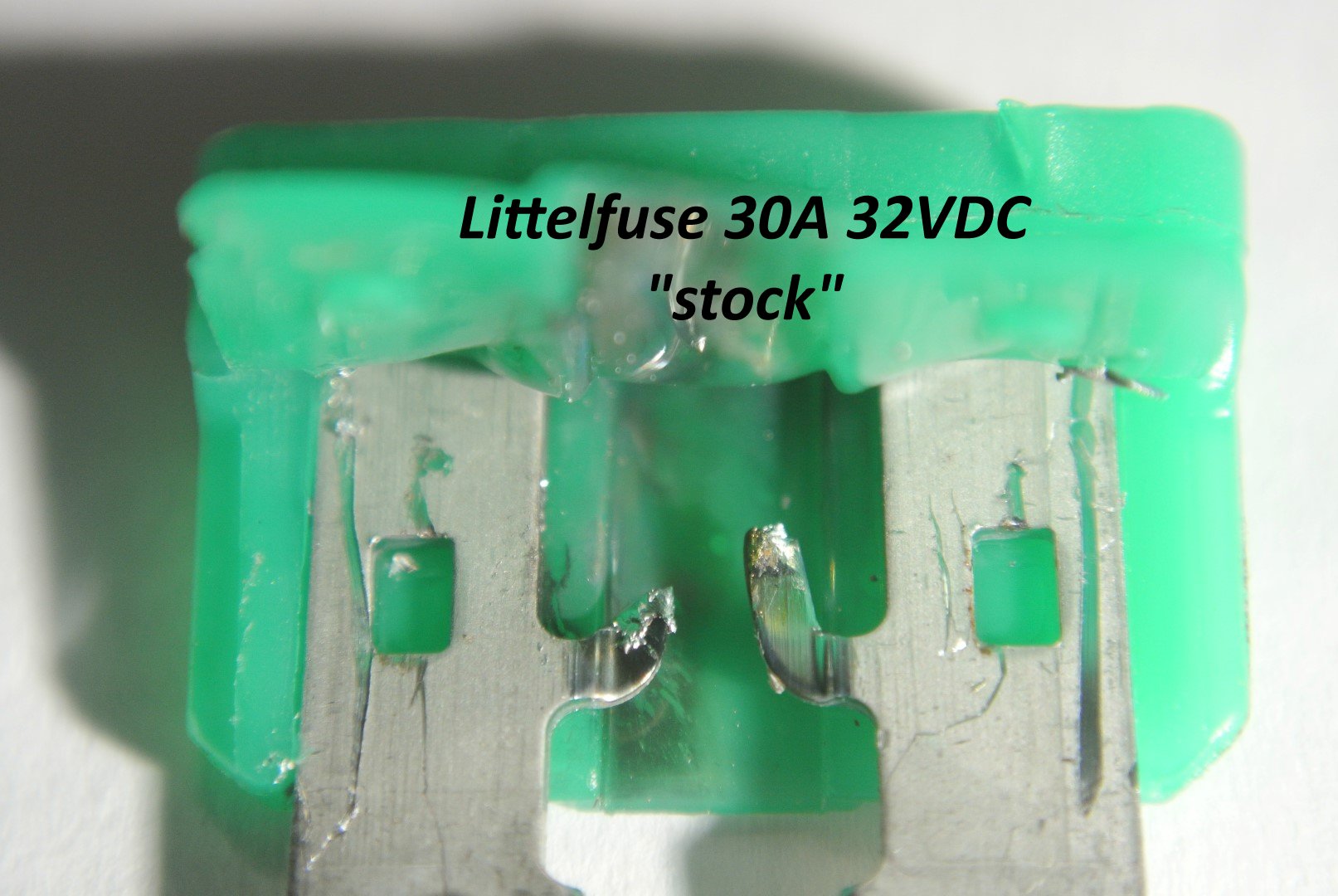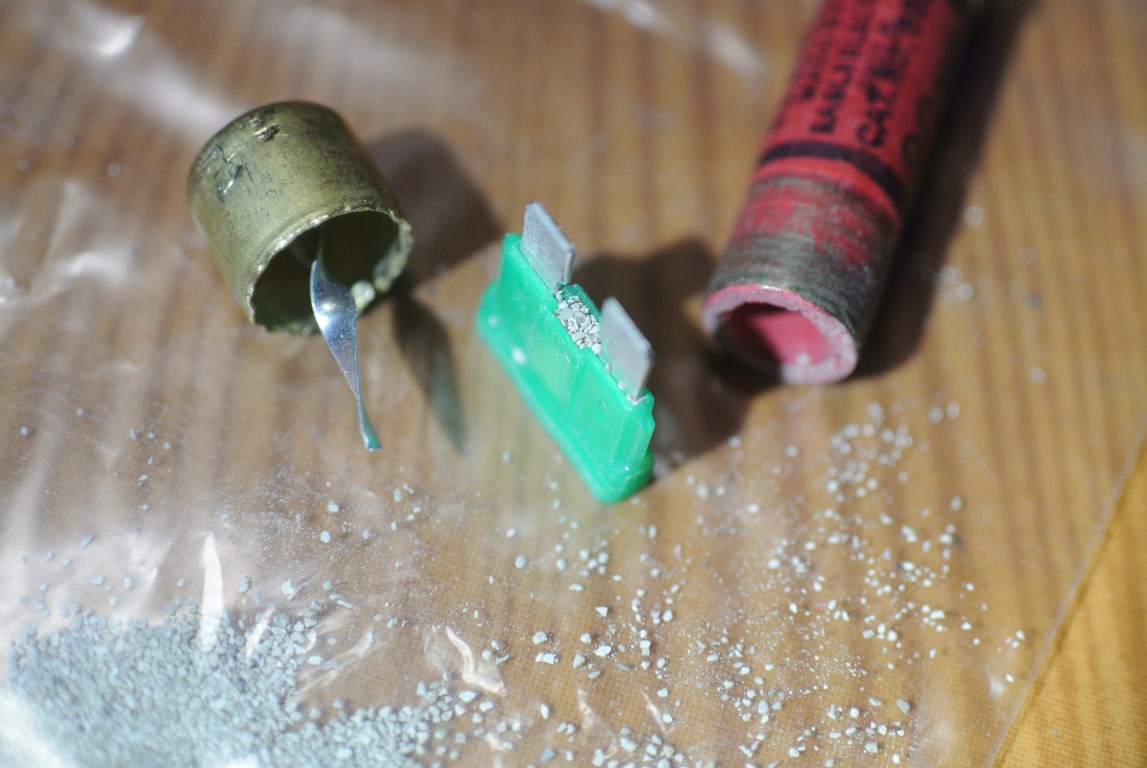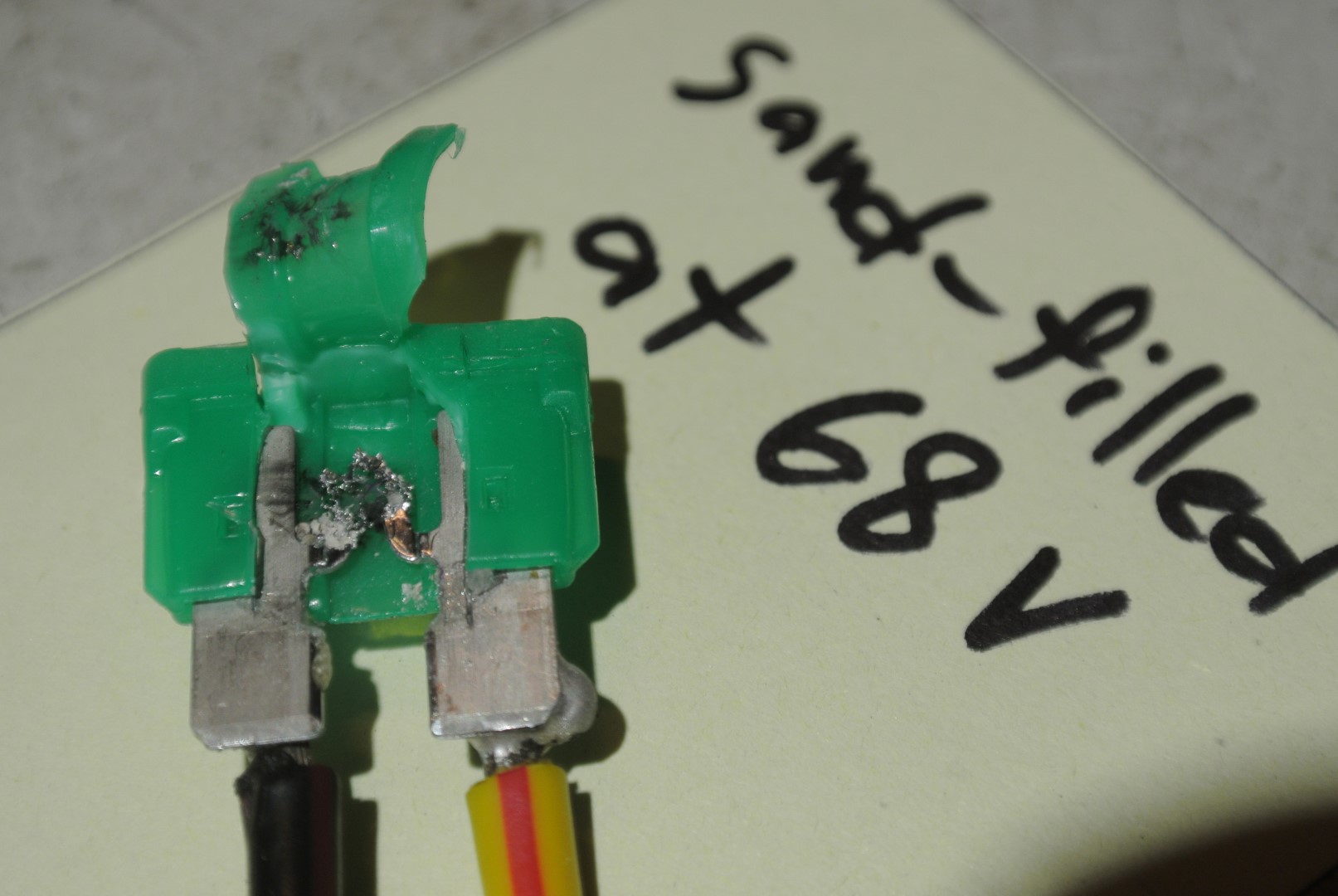Mr. Bungle said:
So what's the verdict here for 32V fuses? My rig is 52V, and I just put a "Max 32V" MAXI-Fuse inline, near the battery, on the positive side... What's this about "arc length"?
Under load, a DC circuit that is disconnected will arc across the gap (this is a part of how brushed motors work at the commutator). If the gap is large enough, the arc will be extinguished. If it is not, it will continue to arc and create intense heat (this is how arc welders work), which can cause a fire inside the fuse, holder and wiring. The gaps are based on the voltage expected in the circuit.
Fuses aren't all rated for high voltage because they have to be physically larger to get a bigger gap, and have thicker and/or better insulation around them, so smaller fuses are rated for lower voltage, and are cheaper due to less material, cheaper insulation, etc etc.
So if you use a fuse or a circuit breaker or a switch, or anything intended to physically disconnect a circuit while it is in operation under maximum load, on a voltage higher than it was designed for, there is no guarantee that it *will* disconnect at all, and arcing across the gap is possible, which means fire is possible.
(and if there was a downstream short in wiring that caused the fuse to blow in the first place, and it doesn't disconnect, then you also have the potential for a fire at the shorted point as well as the fuse!)
It might work fine...but it might not. So if you want a guarantee that it will do it's job, you have to use a fuse rated for the max voltage the system could ever be at during a failure that could cause the fuse to blow.
This is for a BBSHD and the 32V fuse is rated at 50A. I chose 50A to protect my 24AH battery pack (their documentation said something about it being able to handle 50A draw) - should I have chosen 30A because that's all the controller asks for?
A fuse is chosen for the max current that the source or destination can handle without damage.
IF the wires are the potential failure point in a short circuit (overheating, melting, fire), then fuse against that. (meaning, determine what the max current the wire gauge can handle, and fuse so it can't be exceeded).
If the battery is the potential failure point, then fuse against that. (meaning, determine what the max the cells or internal battery parts (BMS, wiring, etc) can handle, and fuse so it can't be exceeded.
In other words, the fuse should be rated no higher in current than the minimum current that will cause damage to something in the system, and preferably far lower than that, but higher than the worst case current draw the system would normally be able to handle in-use.






